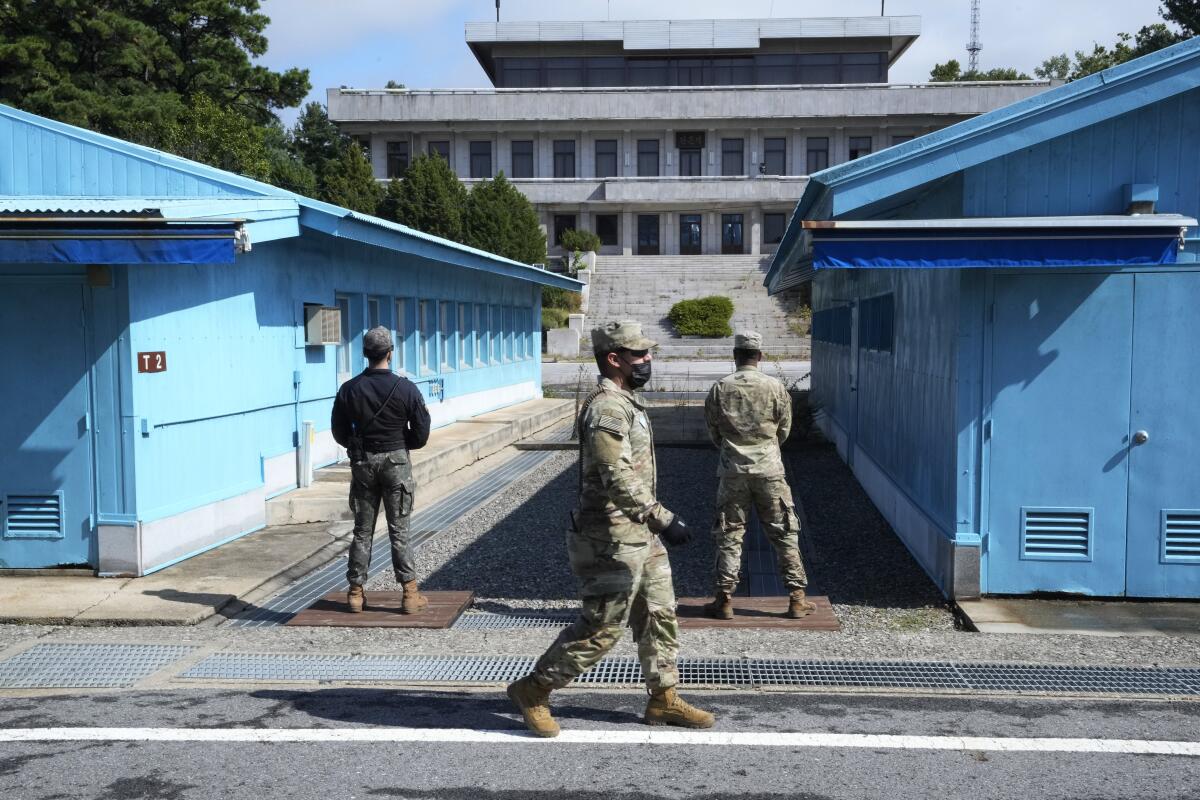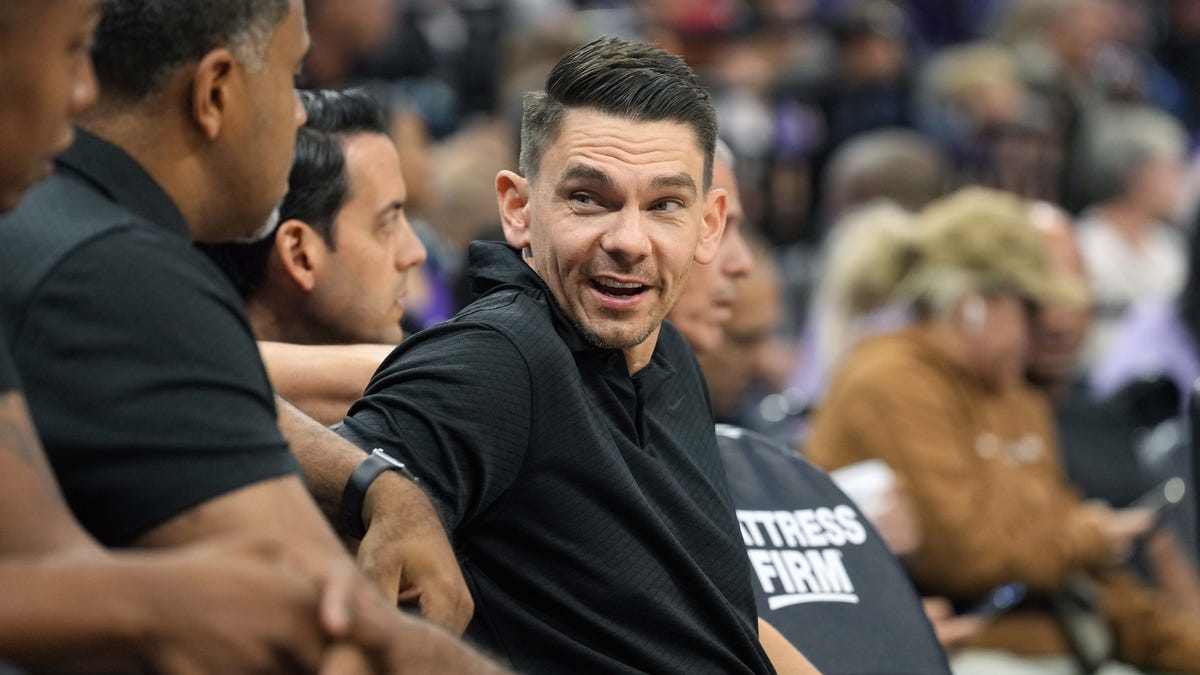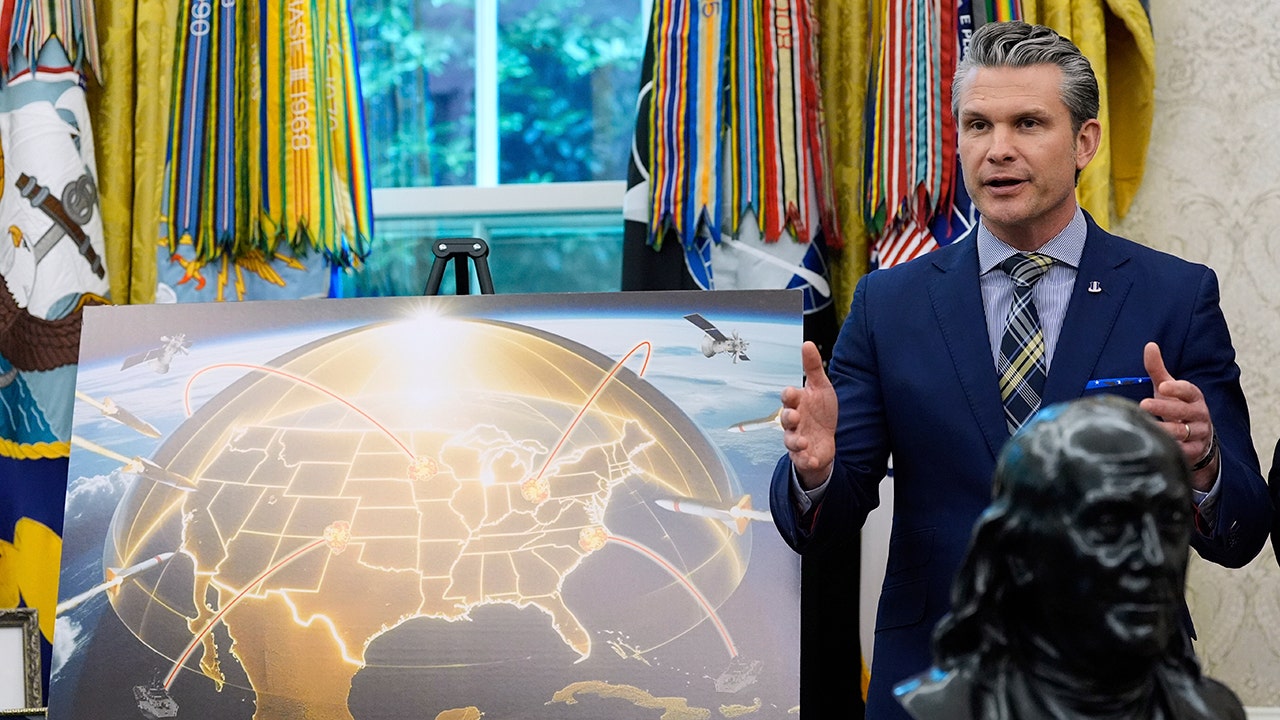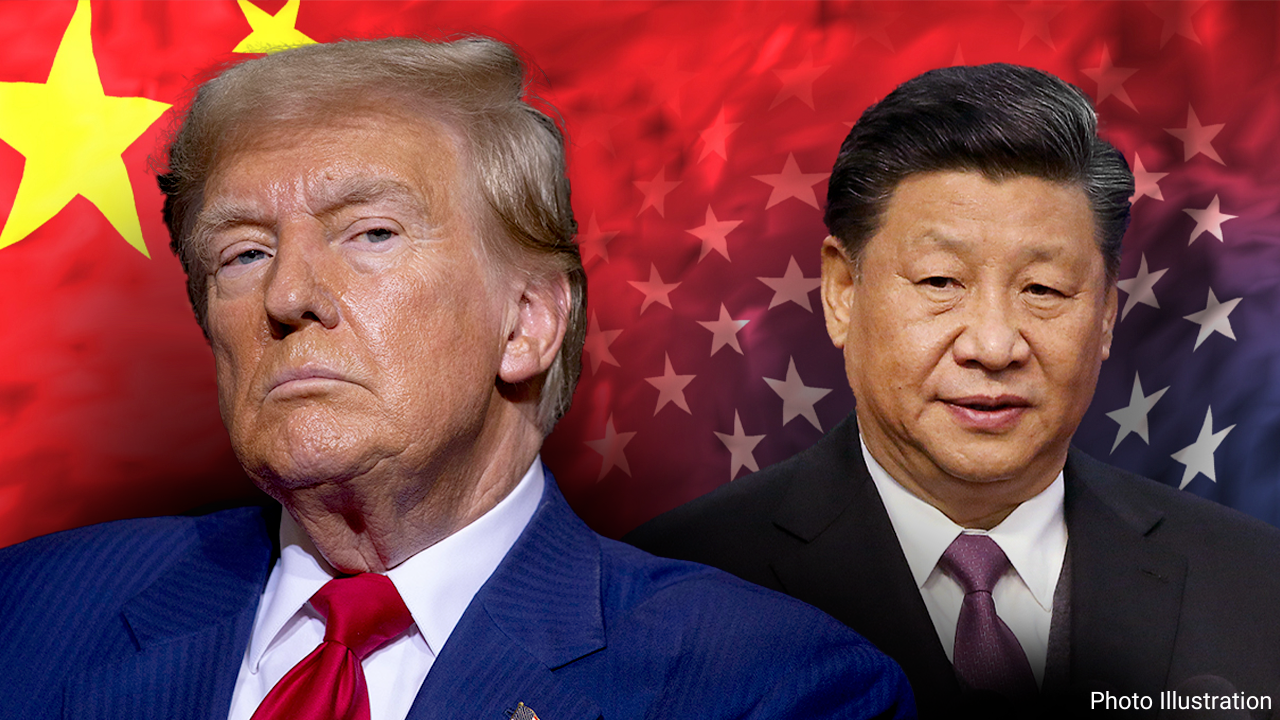Business
Cruise sidelines entire U.S. robotaxi fleet to focus on rebuilding ‘public trust’

In the wake of California withdrawing Cruise’s permit to operate self-driving cars in the state, the company announced that it’s suspending all U.S. robotaxi operations.
The move comes after the California Department of Motor Vehicles alleged that Cruise withheld from regulators video footage of a Cruise robotaxi dragging a person down a city street.
The future for the company is uncertain. Its parent company, General Motors, has lost $1.9 billion on Cruise so far this year, including a $732-million loss in the third quarter, according to its latest earnings report. Competitor Ford shut down its Argo robotaxi unit in 2022, concluding that the possibility of far-off profits weren’t worth the enormous cash drain.
The California DMV gave two reasons for suspending Cruise’s license this week: concerns about safety and claims that the company withheld from regulators video footage that showed a Cruise robotaxi drag an already injured woman 20 feet across street pavement before emergency workers could reach her.
“The most important thing for us right now is to take steps to rebuild public trust,” Cruise said in a statement online Thursday night. “Part of this involves taking a hard look inwards and at how we do work at Cruise.”
Cruise vehicles with humans behind the wheel will continue to operate. Until this week, the company had been operating driverless services in San Francisco, Phoenix, Miami, Houston and Austin, Texas.
Cruise needs to be “extra vigilant when it comes to risk, relentlessly focused on safety” as it rebuilds public trust, a spokeswoman told The Times.
The incident marks a dark chapter in the emerging history of the automated vehicle industry. Whether Cruise’s actions will harm the industry’s reputation, or only its own, remains to be seen.
Robotaxi companies claim that autonomous vehicles are already safer than cars driven by humans. Officials in San Francisco say they’re having trouble getting these companies to provide adequate data to prove that. But Cruise is dealing with more than safety in this case — it’s dealing with allegations that it misled regulators and the media in ways that might erode public trust.
On Oct. 2, a car with a human behind the wheel hit a woman who was crossing at the intersection of 5th and Market streets in San Francisco against a red light. The pedestrian slid over the hood and into the path of a Cruise robotaxi, with no human driver. She became pinned under the car, and was later taken to a hospital.
Cruise quickly called the crash tragic but said that the robotaxi stopped as it was supposed to and that a human driver couldn’t have reacted as quickly.
What Cruise did not say, and what the DMV revealed Tuesday, is that after sitting still for an unspecified period of time, the robotaxi began moving forward at about 7 mph, dragging the woman with it for 20 feet.
Cruise had shown a video of the incident to reporters but barred them from posting it publicly. (Because of that restriction, The Times turned down Cruise’s offer.) The video shown to reporters ended with the robotaxi sitting motionless, but did not include the vehicle dragging the woman.
The DMV said Cruise showed it the same abbreviated video, and only later did the agency see the full version. The two sides are fighting about that version of events. Cruise told reporters it showed the DMV the full video from the start.
In response to a request for comment, a spokesperson for the DMV said it stands by the facts outlined in the orders of suspension.
Cruise Chief Executive Kyle Vogt
(Kimberly White / Getty Images for TechCrunch)
Controversy has surrounded the company for months, after San Francisco’s fire chief lit into Cruise and another robotaxi company, Waymo, for interfering with firetrucks and emergency workers. Police said robotaxis were getting in their way too.
Dozens of such incidents have been reported, including robotaxis blocking an ambulance from exiting a firehouse, driving onto fire hoses and parking themselves there, bursting through police tape and getting tangled in downed utility wires. Cruise robotaxis sometimes gather together up to a dozen at a time to block pedestrians and other cars at busy intersections, a phenomenon whose cause remains a mystery, at least to the public.
Nonetheless, the California Public Utilities Commission, which regulates taxi fares, voted to allow a massive expansion of robotaxi service across San Francisco. Cruise Chief Executive Kyle Vogt soon started talking about big plans for explosive growth, including the introduction next year of a six-passenger pod-like vehicle with no steering wheel called the Origin. “The goal is to get to scale as quickly as we can in terms of the total number of AVs to make this business profitable and sustainable,” he said at the TechCrunch Disrupt conference in September.
Waymo, owned by Google parent Alphabet, is also planning to grow its fleets and move into new cities. It has already launched in Santa Monica and will soon expand to Los Angeles. Los Angeles officials are trying to get a close look at company plans, but are stymied by state law that gives cities little authority over robotaxi operations.
Other robotaxi companies are also gearing up to expand, including Zoox and Motional. Those companies are likely to draw more scrutiny in the wake of Cruise’s setback, said Bryant Walker Smith, an automated vehicle law expert at the University of South Carolina.
Alain Kornhauser, who heads the autonomous vehicle engineering program at Princeton, said the dragging incident is indeed tragic but it’s something that can be fixed. “The problem is, I don’t think anybody who’s writing code thought about a person being trapped under the car,” he said. “Now they can do something like mount a camera to make sure there’s no one under the car before it moves.”
People will be forgiving of odd robotaxi behavior if they trust the companies involved, he said. “But this covering-up business and not being forthright” does long-term damage to public acceptance, he said. “Didn’t we learn from Watergate that the coverup can be worse than the crime? They could be apologetic. They could say, ‘We’re not going to do that again.’”

Business
How South Korea’s next president wants to deal with Trump and his tariffs

SEOUL — The winner of South Korea’s upcoming presidential election will be faced with the task of uniting a country riven by political acrimony since the impeachment of former President Yoon Suk Yeol, who sparked national outrage after declaring martial law in December.
But first, they will have to contend with President Trump’s tariffs.
On Wednesday, U.S. and South Korean trade officials kicked off a new round of negotiations aimed at reaching a deal by July 8, when Trump’s 90-day reprieve for his “liberation day” tariffs expires. South Korea faces a 25% reciprocal tariff rate as well as product-specific duties of 25% for steel, aluminum and automobiles — all of which are major exports.
With the election scheduled for June 3, carrying these talks to the finish line will be the first and most pressing agenda item for South Korea’s next president.
For now, officials from the two countries have agreed to expand the talks beyond tariffs rates to include broader topics such as currency exchange rates and economic security — a reflection of Trump’s desire for a sweeping realignment of the U.S.–South Korea relationship that he has described as “one-stop shopping.”
But there are likely to be further complications.
Trump, who has long griped that South Korea does not pay enough for the upkeep of the 28,500 U.S. troops stationed in the country, has expressed a desire to fold defense cost-sharing into the current talks. Writing on his social media site last month, he said that he had discussed “payment for the big time Military Protection we provide to South Korea” with then-acting President Han Duck-soo.
But with Trump having once claimed he would get Seoul to pay $10 billion a year, the topic has been highly sensitive in South Korea, fueling calls for the country’s nuclear self-armament on grounds that the U.S. can no longer be relied upon for military support. There are also concerns in the country that a “package deal” favored by Trump may not work out to Seoul’s advantage.
Here’s what to know about what South Korea’s three leading presidential candidates have said about tariffs and the U.S.-South Korea relationship under Trump.
Lee Jae-myung, a candidate of the ruling Democratic Party, holds a news conference in January.
(Chung Sung-Jun / Associated Press)
Lee Jae-myung
The former leader of South Korea’s liberal Democratic Party, Lee, 61, is the front-runner in the race, having led by as many as 20 percentage points.
During Trump’s first term, Lee, then the mayor of Seongnam, cautioned against what he called “overly submissive attitudes” in the face of demands that South Korea should pay more for the presence of the U.S. military.
“Giving up whatever is demanded of us will only lead to us losing everything,” he said. “We need to boldly assert our position.”
Lee echoed those sentiments in a presidential debate Sunday, criticizing Han, the former acting president, for reportedly signaling his willingness to renegotiate the latest defense cost-sharing deal between Seoul and Washington.
Under what is known as the Special Measures Agreement, the U.S. has covered 40% to 50% of the total costs of keeping troops in South Korea, according to the U.S. Congressional Research Service.
Under the latest version, which was signed under the outgoing Biden administration and will last from 2026 to 2030, Seoul’s annual contribution in the first year will be $1.19 billion, an 8.3% increase from 2025.

A U.S. soldier walks at the Panmunjom border village in Paju, South Korea. President Trump has long complained that South Korea does not pay enough for the upkeep of the 28,500 U.S. troops stationed in the country.
(Ahn Young-joon / Associated Press)
Lee, who is running on a platform of pragmatic diplomacy, has also stressed the need to balance South Korea’s relationship with the U.S. against those with regional neighbors such as Russia or China.
“The U.S.-South Korea alliance is important, and we need to expand and develop that in the future — from a security alliance into an economic alliance and a comprehensive alliance,” he said Sunday. “But that does not mean we can rely exclusively on the U.S.-South Korea alliance.”
While describing Trump’s tariffs as the “campaign of a madman,” Lee has also indicated a willingness to discuss a package deal that spans Trump’s Alaska natural gas pipeline project, the defense cost issue and cooperation in shipbuilding.
Lee’s camp has said that if elected, he will begin his term by seeking an extension of Trump’s 90-day grace period for the tariffs.
“If we win the election we will need time to closely examine the issues at the center of the trade relationship with the U.S. as well as any progress made on the tariff negotiations and come up with alternatives,” an official from Lee’s camp told the South Korean newspaper Donga Ilbo last week.

South Korea’s People Power Party’s presidential candidate Kim Moon-soo campaigns Tuesday in Seoul.
(Ahn Young-joon / Associated Press)
Kim Moon-soo
A distant second in the polls, Kim, 73, served as labor minister under the impeached Yoon and is the conservative People Power Party’s nominee.
Staying true to the South Korean right’s self-identification as the staunchly pro-U.S. political camp, Kim has accused Lee of seeking to curry favor with China at the expense of the U.S.-South Korea relationship.
“Your comments in the past would be considered appalling from the perspective of the U.S.,” he told Lee at the debate Sunday.

Participants march to the headquarters of the People Power Party in Seoul during a December 2024 rally to demand South Korean President Yoon Suk Yeol’s impeachment.
(Ahn Young-joon / Associated Press)
Unlike Lee, who has warned against rushing into a trade deal in favor of a slower and more strategic approach, Kim has said that he would immediately set up a U.S.-South Korea summit to ink a deal before July 8, if he is elected president.
“I will make sure that tariffs against South Korea are either removed or the lowest out of any country in the world,” he said at a recent rally.
To this end, Kim has cast himself as the candidate with the greatest chance of winning over Trump.
During his party’s primary debates in April, when asked by the moderator whether he would wear a MAGA hat if Trump requested it during any tariff negotiations, Kim responded: “I would do even more, I would even wear a jumper if he asked.”
“The most important thing in negotiating with President Trump is trust,” he said Sunday. “Only when both sides can trust each other can the U.S.-South Korea alliance be strengthened, and I am the one who has the most favorable and trusting relationship with President Trump.”

A currency trader works at the foreign exchange dealing room of KEB Hana Bank headquarters in Seoul last month.
(Ahn Young-joon / Associated Press)
On defense cost-sharing, Kim has struck a noticeably more acquiescent tone than Lee: At a meeting Monday of the American Chamber of Commerce in Korea, he said that he would be willing to accept a hike in Seoul’s contribution.
“The global order and trade environment is rapidly changing. In order to overcome these crises, it is critical that we strengthen positive cooperation and the U.S.-South Korea alliance,” he said. “I will establish common ground between the two countries through comprehensive negotiations and find a win-win solution for both.”

Lee Jun-seok, the presidential candidate of the New Reform Party, center, runs to attend a campaign event Saturday in Seoul.
(Ahn Young-joon / Associated Press)
Lee Jun-seok
Polling around 10%, the 40-year old candidate from the conservative Reform Party faces long odds for the presidency.
Still, he has emphatically rejected repeated calls to form a unity ticket, presenting himself as the younger, shrewder and less doctrine-driven alternative to what he has criticized as the old-hat conservatism of those such as Kim.
At the debate Sunday, Lee Jun-seok called for “careful calculation” in navigating the U.S.-South Korea relationship under Trump, while emphasizing the need to demonstrate that South Korea is not just a trading partner but also an important strategic ally to Washington.
Yet when it comes to tariffs, he has also openly called Trump’s bluff.
“I think we have to bet on the fact that Trump will eventually find that it’s difficult to maintain this situation,” he said on a YouTube political talk show last month, citing the economic pressures that tariffs against China will create for Trump’s heartland supporters.
“What Trump is advancing isn’t sustainable…. My view is that, it’s likely that Trump will admit defeat as soon as within the next six months.”
Business
CalRecycle drafts revised plastic recycling rules that are more friendly to industry

State waste officials have taken another stab at rules implementing a landmark plastic waste law, more than two months after Gov. Gavin Newsom torpedoed their initial proposal.
CalRecycle, the state agency that oversees waste management, recently proposed a new set of draft regulations to implement SB 54, the 2022 law designed to reduce California’s single-use plastic waste. The law was designed to shift the financial onus of waste reduction from the state’s people, towns and cities to the companies and corporations that make the polluting products. It was also intended to reduce the amount of single-use plastics that end up in California’s waste stream.
The draft regulations proposed last week largely mirror the ones introduced earlier this year, which set the rules, guidelines and parameters of the program — but with some minor and major tweaks.
The new ones clarify producer obligations and reporting timelines, said organizations representing packaging and plastics companies, such as the Circular Action Alliance and the California Chamber of Commerce.
But they also include a broad set of exemptions for a wide variety of single-use plastics — including any product that the U.S. Food and Drug Administration and the U.S. Department of Agriculture have jurisdiction over, which includes all packaging related to produce, meat, dairy products, dog food, toothpaste, condoms, shampoo and cereal boxes, among other products.
The rules also leave open the possibility of using chemical or alternative recycling as a method for dealing with plastics that can’t be recycled via mechanical means, said people representing environmental, recycling and waste hauling companies and organizations.
California’s attorney general, Rob Bonta, filed a suit against ExxonMobil last year that, in part, accuses the oil giant of deceptive claims regarding chemical recycling, which the company disputes.
Critics say the introduction of these exemptions and the opening for polluting recycling technologies will undermine and kneecap a law that just three years ago Newsom’s office described as “nation-leading” and “the most significant overhaul of the state’s plastic and packaging policy in history.”
The “gaping hole that the new exemptions have blown” into the bill make it unworkable, practically unfundable, and antithetical to its original purpose of reducing plastic waste, said Heidi Sanborn, director of the National Stewardship Action Council.
Last March, after nearly three years of negotiations among various corporate, environmental, waste, recycling and health stakeholders, CalRecycle drafted a set of finalized regulations designed to implement the single-use plastic producer responsibility program under SB 54.
But as the deadline for implementation approached, industries that would be affected by the regulations including plastic producers and packaging companies — represented by the California Chamber of Commerce and the Circular Action Alliance — began lobbying the governor, complaining the regulations were poorly developed and might ultimately increase costs for California taxpayers.
Newsom allowed the regulations to expire and told CalRecycle it needed to start the process over.
Daniel Villaseñor, a spokesman for the governor, said Newsom was concerned about the program’s potential costs for small businesses and families, which a state analysis estimated could run an extra $300 per year per household.
He said the new draft regulations “are a step in the right direction” and they ensure “California’s bold recycling law can achieve its goal of cutting plastic pollution,” said Villaseñor in a statement.
John Myers, a spokesman for the California Chamber of Commerce, whose members include the American Chemistry Council, Western Plastics Assn. and the Flexible Packaging Assn., said the chamber was still reviewing the changes.
CalRecycle is holding a workshop next Tuesday to discuss the draft regulations. Once CalRecycle decides to finalize the regulations, which experts say could happen at any time, it moves into a 45-day official rule-making period during which the regulations are reviewed by the Office of Administrative Law. If it’s considered legally sound and the governor is happy, it becomes official.
The law, which was authored by state Sen. Ben Allen (D-Santa Monica) and signed by Newsom in 2022, requires that by 2032, 100% of single-use packaging and plastic foodware produced or sold in the state must be recyclable or compostable, that 65% of it can be recycled, and that the total volume is reduced by 25%.
The law was written to address the mounting issue of plastic pollution in the environment and the growing number of studies showing the ubiquity of microplastic pollution in the human body — such as in the brain, blood, heart tissue, testicles, lungs and various other organs.
According to one state analysis, 2.9 million tons of single-use plastic and 171.4 billion single-use plastic components were sold, offered for sale or distributed during 2023 in California.
Most of these single-use plastic packaging products cannot be recycled, and as they break down in the environment — never fully decomposing — they contribute to the growing burden of microplastics in the air we breathe, the water we drink, and the soil that nourishes our crops.
The law falls into a category of extended producer responsibility laws that now regulate the handling of paint, carpeting, batteries and textiles in California — requiring producers to see their products throughout their entire life cycle, taking financial responsibility for their products’ end of life.
Theoretically such programs, which have been adopted in other states, including Washington, Oregon and Colorado, spur technological innovation and potentially create circular economies — where products are designed to be reused, recycled or composted.
Sanborn said the new exemptions not only potentially turn the law “into a joke,” but will also dry up the program’s funding and instead put the financial burden on the consumer and the few packaging and single-use plastic manufacturers that aren’t included in the exemptions.
“If you want to bring the cost down, you’ve got to have a fair and level playing field where all the businesses are paying in and running the program. The more exemptions you give, the less funding there is, and the less fair it is,” she said.
In addition, because of the way residential and commercial packaging waste is collected, “it’s all going to get thrown away together, so now you have less funding” to deal with the same amount of waste, but for which only a small number of companies will be accountable for sorting out their material and making sure it gets disposed of properly.
Others were equally miffed, including Allen, the bill’s author, who said in a statement that while there are some improvements in the new regulations, there are “several provisions that appear to conflict with law,” including the widespread exemptions and the allowance of polluting recycling technologies.
“If the purpose of the law is to reduce single-use plastic and plastic pollution,” said Anja Brandon from the Ocean Conservancy, these new regulations aren’t going to do it — they are “inconsistent with the law and fully undermine its purpose and goal.”
Nick Lapis with Californians Against Waste said his organization was “really disappointed to see the administration caving to industry on some core parts of this program,” and also noted his read suggests many of the changes don’t comply with the law.
Next Tuesday, the public will have an opportunity to express concerns at a rulemaking workshop in Sacramento.
However, Sanborn fears there will be little time or appetite from the agency or the governor’s office to make substantial changes to the new regulations.
“They’re basically already cooked,” said Sanborn, noting CalRecycle had already accepted public comments during previous rounds and iterations.
“California should be the leader at holding the bar up in this space,” she said. “I’m afraid this has dropped the bar very low.”
Business
OpenAI teams up with former Apple design chief Jony Ive as AI race heats up

Jony Ive, a former Apple executive known for designing the iPhone, is joining forces with OpenAI, the San Francisco startup behind popular chatbot ChatGPT.
On Wednesday, OpenAI said it’s buying io, an AI devices startup that Ive founded a year ago, for nearly $6.5 billion in an all-stock deal, the largest acquisition in OpenAI’s history.
“We have the opportunity here to kind of completely reimagine what it means to use a computer,” OpenAI Chief Executive Sam Altman said in a video with Ive about the partnership.
The pair don’t specify what AI devices they’re working on, but Altman called it “the coolest piece of technology that the world will have ever seen.”
The partnership shows how OpenAI is taking on some of the world’s most powerful tech companies including Google, Apple and Meta that are also working on AI-powered devices to shape the future of computing.
Chirag Dekate, a VP analyst at Gartner, said the announcement reflected an “inflection point” in the tech industry, where future products and services will offer users more personalized and proactive assistance.
“This shift suggests a future where technology is less about the tools themselves and more about the intelligently orchestrated experiences they enable,” he said in an email.
Globally, spending on generative AI is expected to total $644 billion in 2025, an increase of 76.4% from 2024, according to a forecast by Gartner, a research and advisory firm based in Connecticut that focuses on technology.
The race to build AI-powered wearable gadgets and roll out more AI tools that can generate video, text and code and help people shop also means that major tech companies are recruiting top-tier talent. Earlier in May, OpenAI hired Fidji Simo, a former top Meta executive and the chief executive of grocery delivery startup Instacart, to lead the startup’s applications team.
Ive, a British American designer, is a well-known figure in the tech industry because he designed some of Apple’s iconic products such as the Macbook, iPhone, iPad and iPod. Joining Apple in the 1990s, Ive became Apple’s chief design officer in 2015.
He left the company in 2019 and started LoveFrom, a creative collective and design firm that worked with brands including OpenAI.
Silicon Valley tech companies have been working on gadgets, including headsets and glasses, for years but they’re still not as ubiquitous as the smartphone.
There have also been major flops such as Humane’s AI pin, a wearable virtual voice-operated assistant that was criticized for various issues such as providing inaccurate information and overheating. In February, San Francisco-based Humane shut down the AI pin after it was acquired by Hewlett-Packard.
But the fumbles haven’t stopped tech companies from barreling forward with building glasses, brain-computer interfaces and humanoid robots as they look to a future beyond the smartphone.
When Google released smart glasses in 2013 that could shoot photos and videos, the company faced concerns about people using the device to surreptitiously record other people or read text while ignoring others.
But the gadget resurfaced years later. This week, Google unveiled a prototype of its AI smart glasses at its annual I/O developer conference in Mountain View, demonstrating how people can use the device to search for information about a painting, travel and other topics without having to type on their smartphone. The search giant is partnering with eyewear brands Warby Parker and Gentle Monster on smart glasses.
Last year, Santa Monica-based Snap unveiled the fifth generation of Spectacles, its augmented reality glasses that overlay digital objects on the physical world. The device, which was only available for developers, allowed people to play with virtual pets, conjure up images with a voice command or swing a virtual golf club.
Meta teamed up with Ray-Ban on smart glasses that include an AI assistant that can answer questions, translate and help take a photo. It’s also working on a more powerful pair of AR glasses that lets people take video calls, get recipe recommendations and multitask in other ways.
And Apple, which unveiled a pricey mixed-reality headset known as the Vision Pro in 2023, is also reportedly working on smart glasses.
In the video with Altman, Ive said the products that people use to connect to technology are decades old, so it’s “just common sense to at least think surely there’s something beyond these legacy products.”
“I have a growing sense that everything I’ve learned over the last 30 years has led me to this place and to this moment,” Ive said in the video.
-

 Culture1 week ago
Culture1 week agoBook Review: ‘Original Sin,’ by Jake Tapper and Alex Thompson
-

 Education1 week ago
Education1 week agoA $5 Billion Federal School Voucher Proposal Advances in Congress
-

 Education1 week ago
Education1 week agoVideo: Opinion | We Study Fascism, and We’re Leaving the U.S.
-

 Technology1 week ago
Technology1 week agoLove, Death, and Robots keeps a good thing going in volume 4
-

 News1 week ago
News1 week agoAs Harvard Battles Trump, Its President Will Take a 25% Pay Cut
-

 Technology1 week ago
Technology1 week agoMeta’s beef with the press flares at its antitrust trial
-

 News1 week ago
News1 week agoMenendez Brothers Resentenced to Life With Parole, Paving Way for Freedom
-

 Politics1 week ago
Politics1 week agoRepublicans say they're 'out of the loop' on Trump's $400M Qatari plane deal















